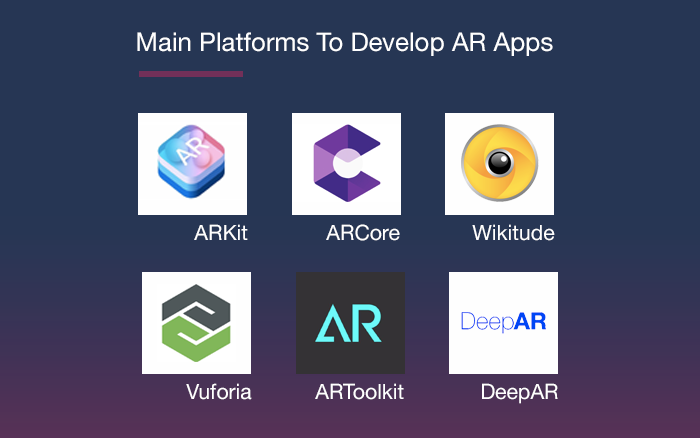Are you planning to build your own AR app? But, you don’t know how to start? So, lets read through this to find some incredible methods to build your AR app right away. This will help beginners or skilled developers to increase their knowledge on augmented reality development and Unity 3D.
ARKit: ARKit is an SDK for developers to make AR apps and games for ipads and iphones. AR apps that builds with ARKit needs iOS 11 or 12. Apple’s SDK requires iPad, iPhone hardware, camera, motion sensors to help AR applications. ARKit supports 2-dimensional image detection, along with 2D image tracking, which means that the capability to embed objects into AR experiences. SDK allows creating apps which would recognize spaces and 3D objects, and virtual objects on surfaces. For example, Ikea Place App is an AR app where you can place virtual furniture items into your own real spaces.
Wikitude: Wikitude released the latest version of SLAM solution for AR apps: Wikitude SDK 8. Working with Wikitude is seamless for any developer- all you have to do is download the SDK and a sample app, study the documentation and start making more.
Wikitude is continuously enhancing its product, adding more functionality in each release. In addition to the paramount features of SDK 7 like object recognition, image recognition, ARKit, 3D markerless tracking and ARCore Support, this upgraded version offers much more:
· Scene recognition
· Windows support
· Instant Augmentations
· Extended recording and object tracking
ARCore: ARCore is Google’s response to ARKit. ARCore is a developer platform for AR design and deployment. With ARCore SDK, users’ phones can sense the external environment. And guess what, it supports both iOS and Android devices. It has many additional functionalities such as:
· It comes with 3 core abilities to merge real and virtual worlds.
· Light estimation in real life lighting situations
· Environmental understanding
· Motion tracking
Vuforia: Vuforia is another popular platform which can help you build AR Apps. It supports iOS, UWP, Android and Unity Editor platform. It has the following functionalities:
· Text and environment recognition
· VuMark Code
· Recognition of different types of visual objects
Plus, you can create and scan object targets. The object recognition process can be implemented using the database. The unity plugin is very powerful and simple to integrate. All functionalities and plugins of the platform are free to use, but comes with Vuforia watermarks.
DeepAR: DeepAR is a great tool from the 3D designers, engineers and animators with 20 years of market presence, who had previously worked with Hailo App, Candy Crush, Russian Space Agency and NASA. For content editing purpose, they have DeepAr SDK. It comes up with 4 effect types: Rigid objects, morph tasks, deformable masks and post processing effects. Using this, developers can use AR SDK for high quality face lenses, something similar to Facebook and Snapchat, along with the various effects and masks for desktop and mobile devices applications.

This AR kit has the ability of detecting faces, facial features in real-time, using machine learning techniques and patented data models. It is fast and can recognize around 70 facial points at 60 frames per second. And, DeepAR’s engine executes precise image rendering which can be optimized for mobile and web apps, including Android phones of lower specification.
Xzimg: Xzimg is an AR SDK from Hong Kong used extensively for real-time face tracking and building AR-based apps. These apps are good for desktop, mobile apps, web browsers via a Unity Plugin. It supports Windows, iOS and Android platform. Xzimg consists of three main products in its SDK:
· Augmented Face
· Augmented Vision
· Magic Face






0 Comments
Please do not enter any spam link in the comments box.